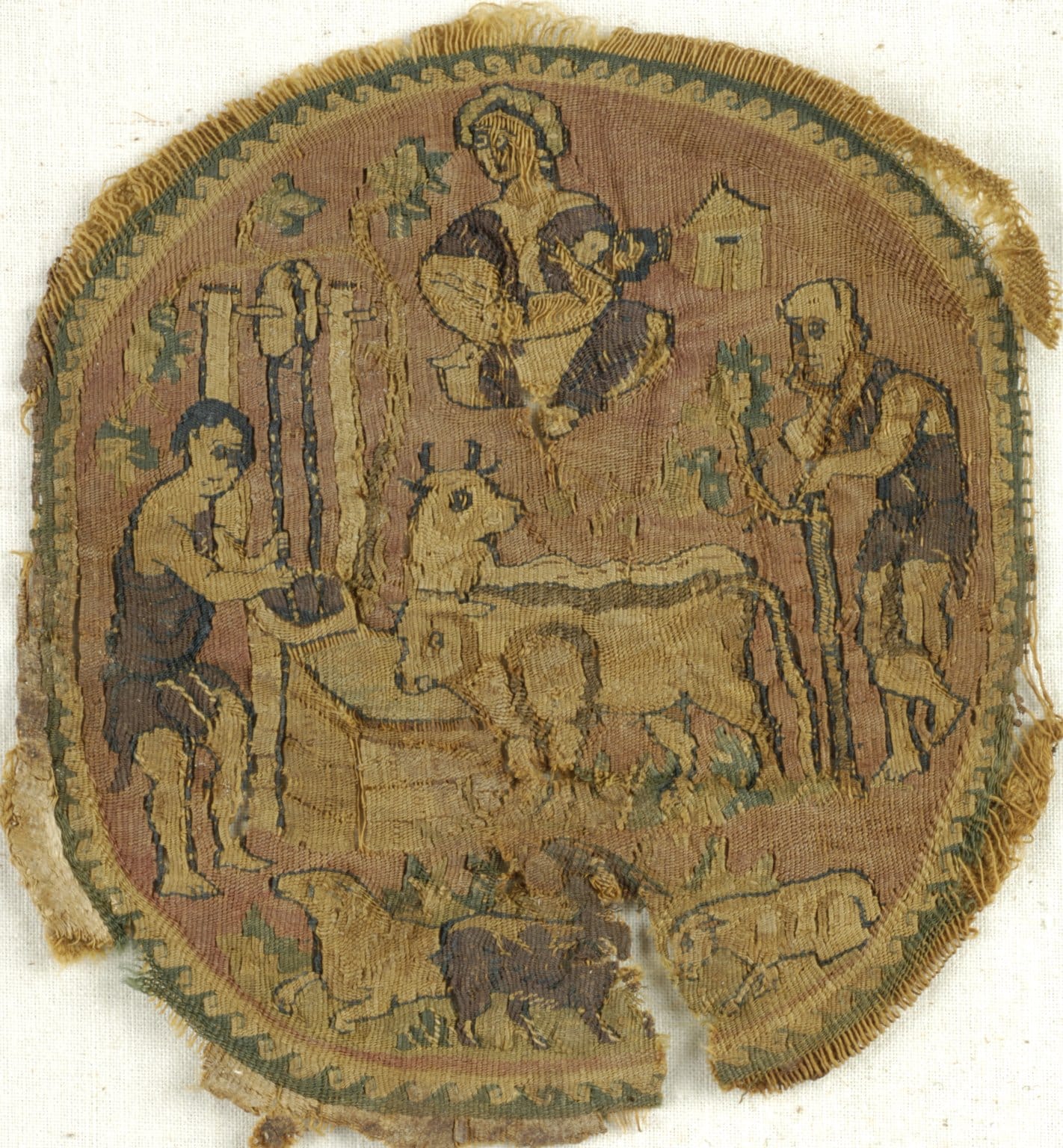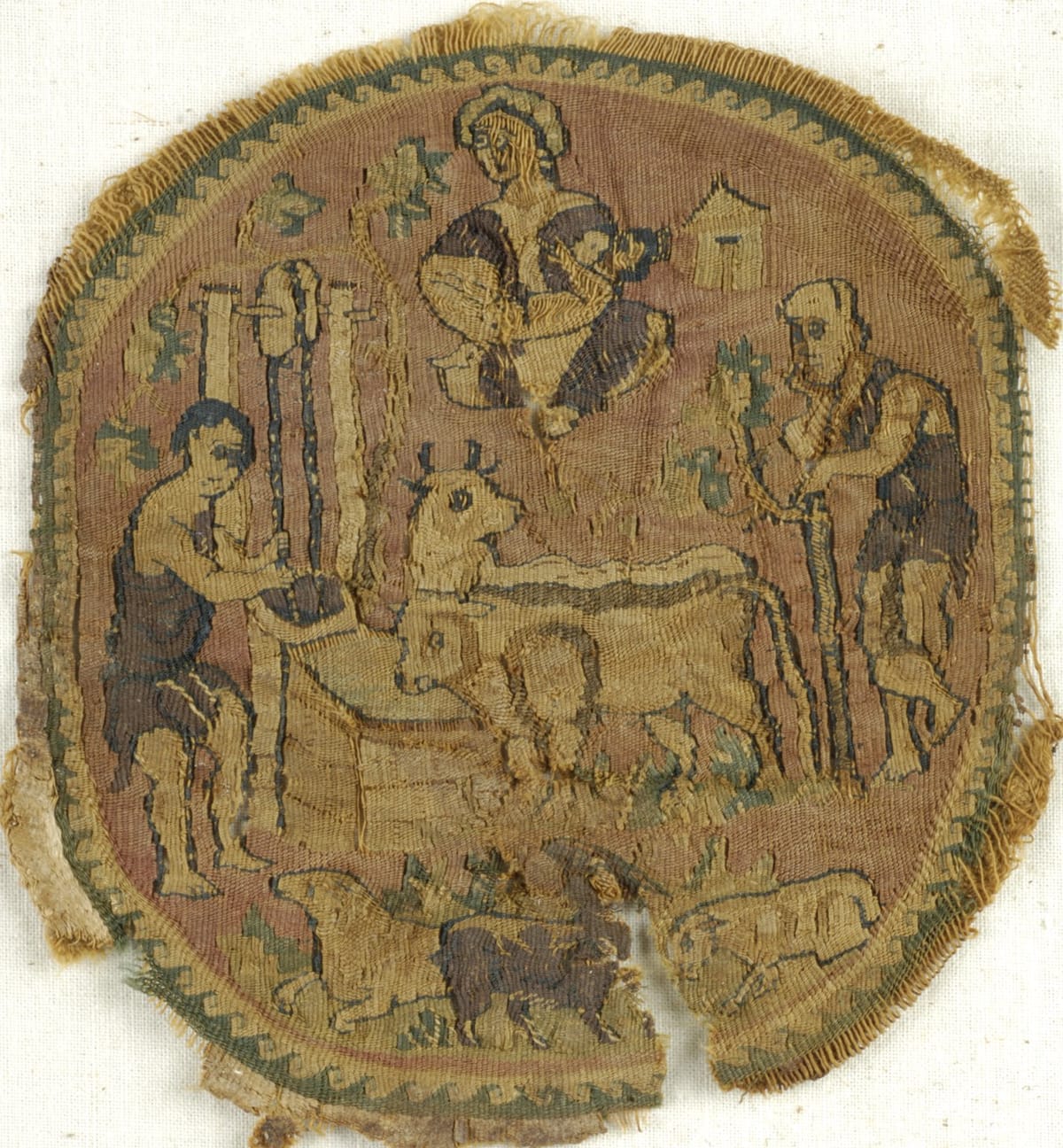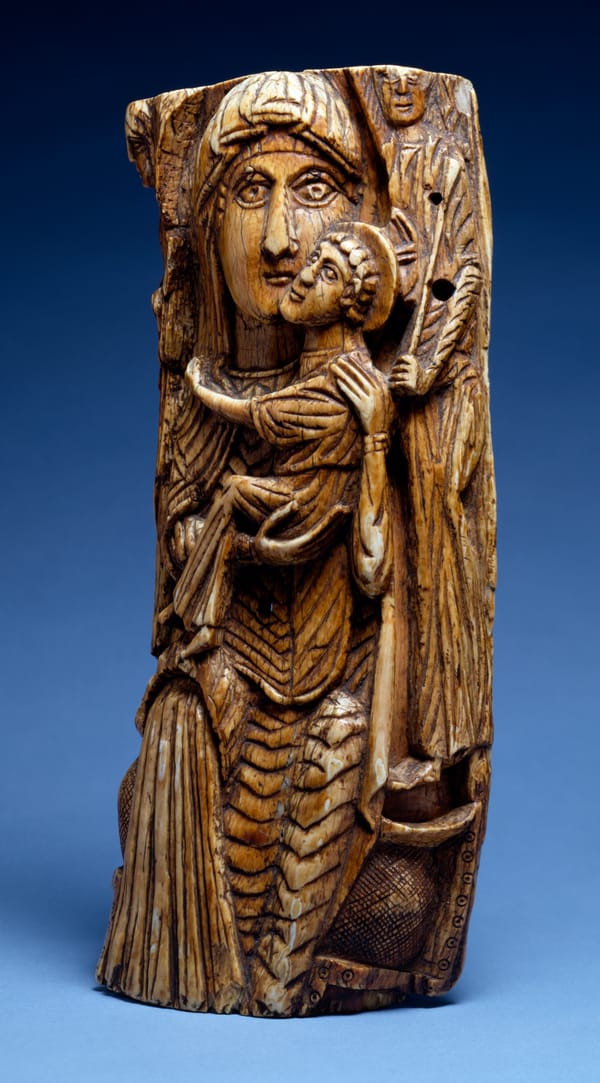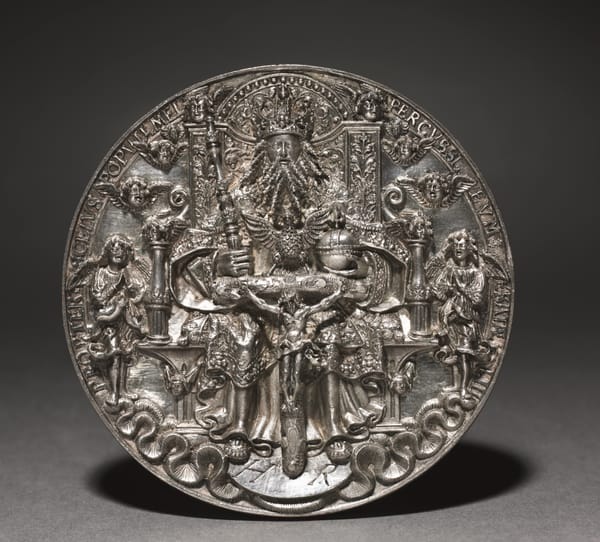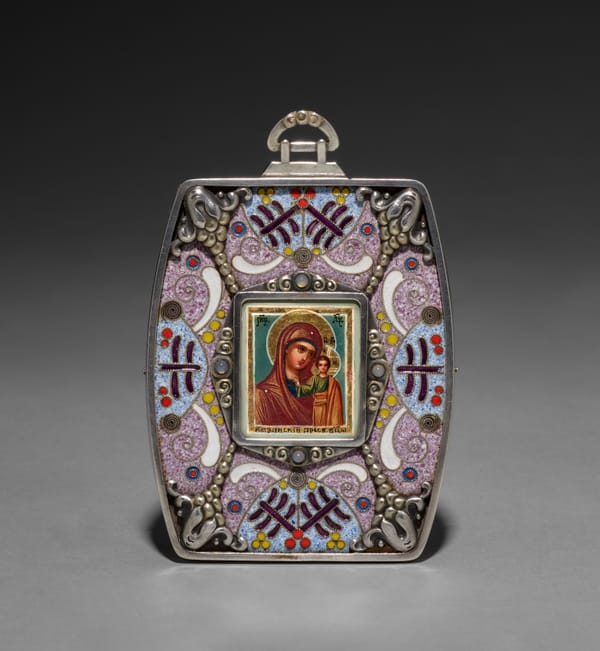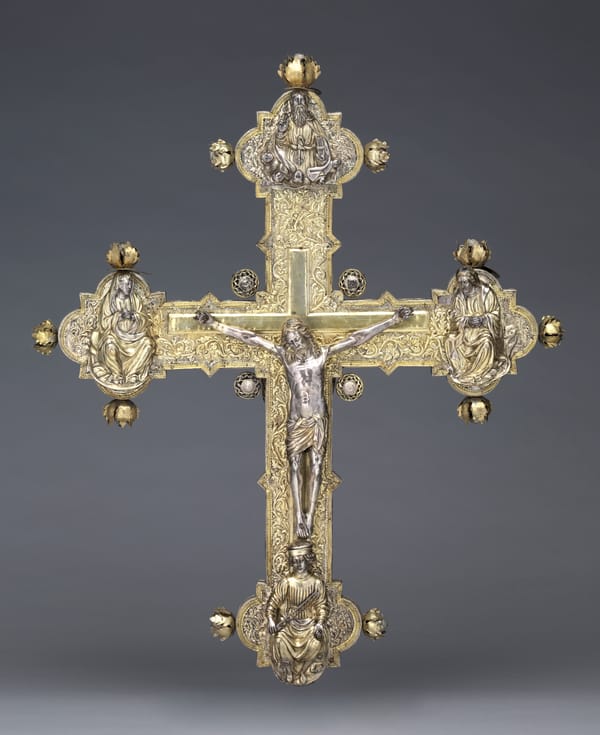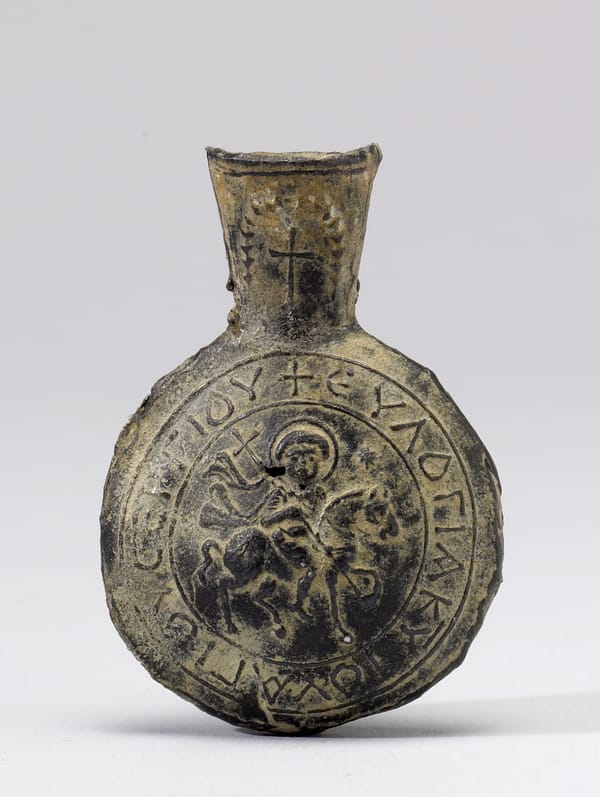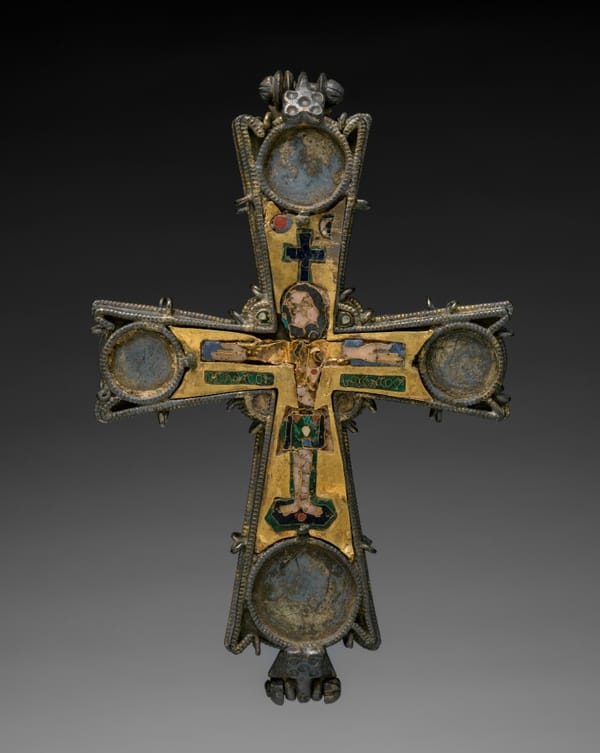About the Image:
This textile fragment is a Coptic roundel from the 5th century, an era that reflects the transition from the Late Antique period to the early Byzantine era in Egypt. The Coptic textiles from this period are renowned for their intricate weaving techniques, which include tapestry weaves on linen and wool. The scenes often depict religious or everyday life motifs, and this particular roundel illustrates human figures engaged in various activities, possibly agricultural, with animals that suggest a pastoral scene.
The color palette is subdued, which is characteristic for the period and the available dyes, often relying on earth tones and natural pigments. Over time, the colors would have faded, but some sense of the original vibrancy can still be discerned. The roundel shape is also significant, as it was a common decorative element used in Coptic textiles, often serving as medallions sewn onto tunics and other garments.
The iconography here is illustrative rather than symbolic, focusing on the depiction of daily life rather than the more common religious iconography that would become prevalent in later Coptic art. The craftsmanship of the weaver is evident in the detailed rendering of the figures and the animals, suggesting a high level of skill and an established tradition of textile arts in the region.
The survival of this textile to the present day is remarkable and offers valuable insights into the material culture of early Christian Egypt. Its preservation allows us to glimpse the aesthetics, technology, and social practices of a time that was pivotal in the development of both Eastern and Western art traditions.
Image by Brookyln Museum CC-BY
